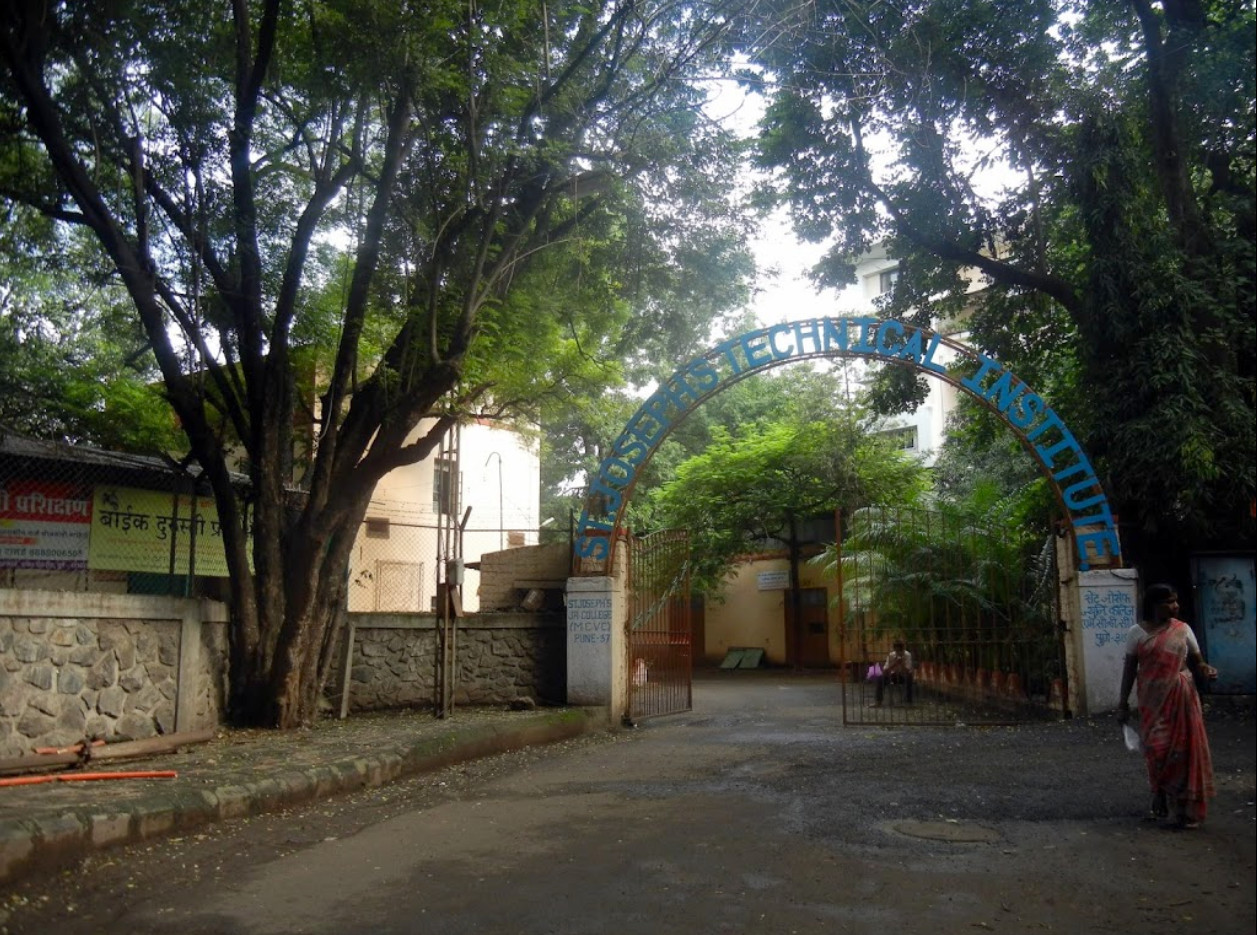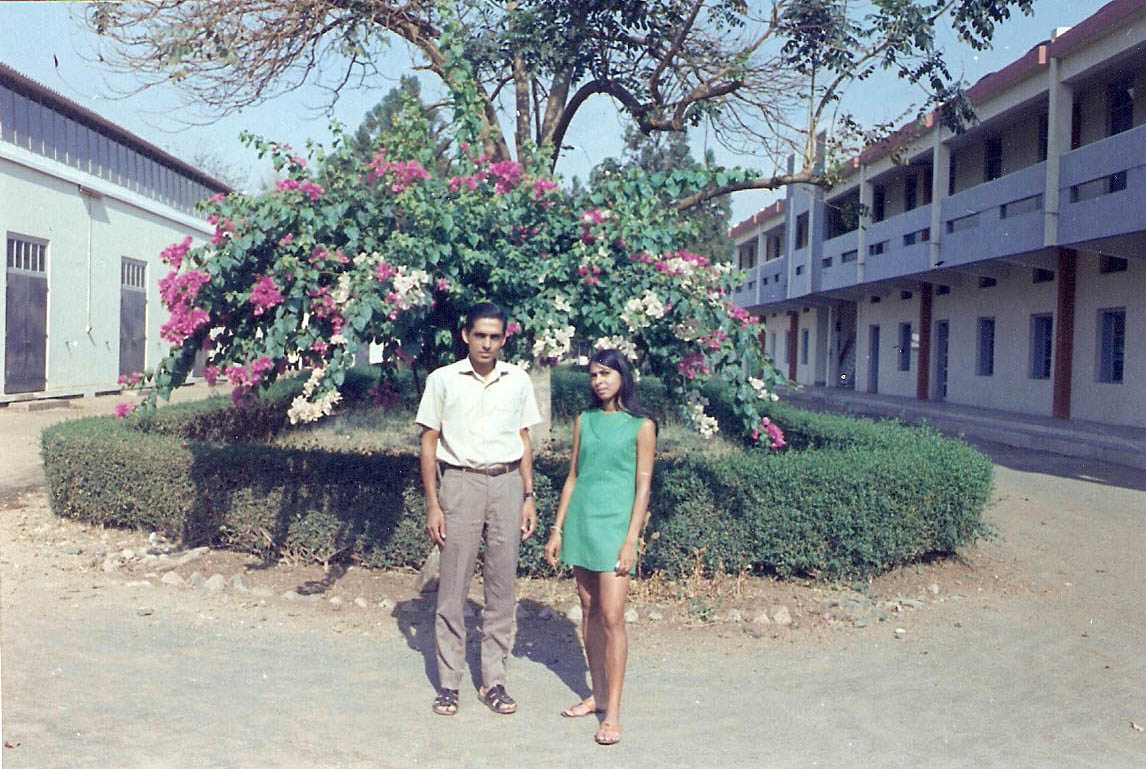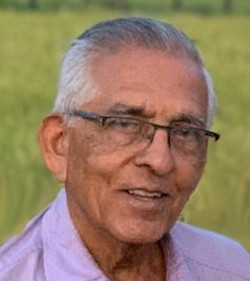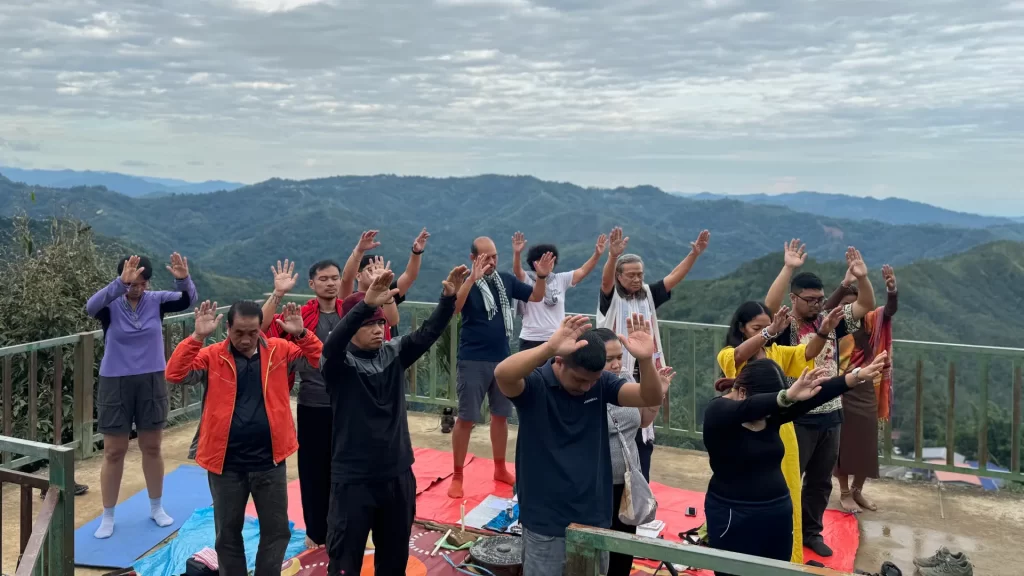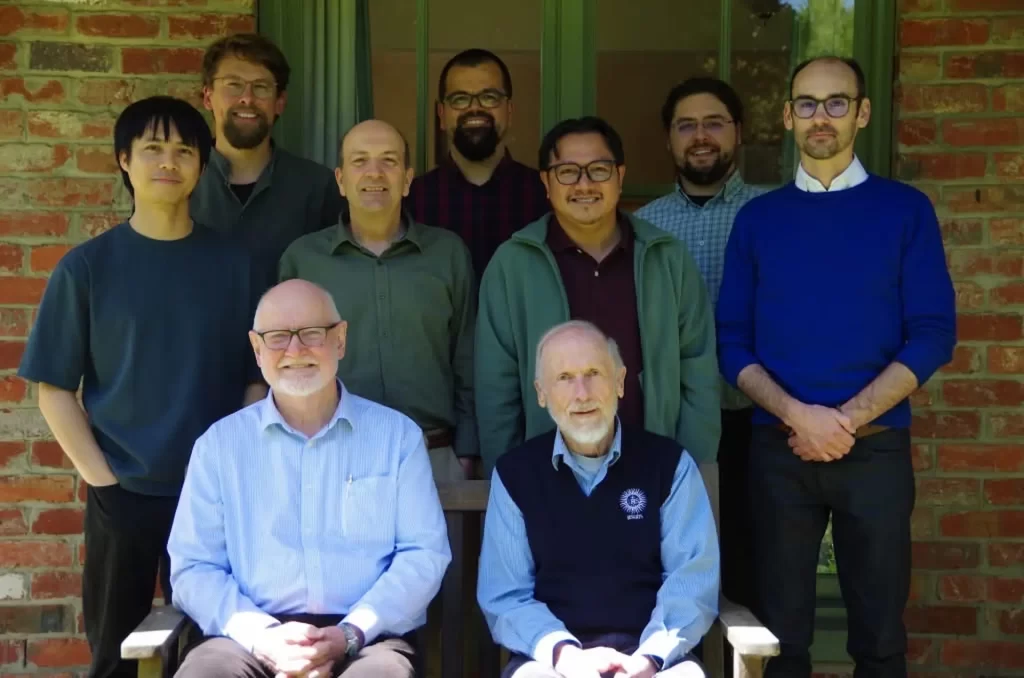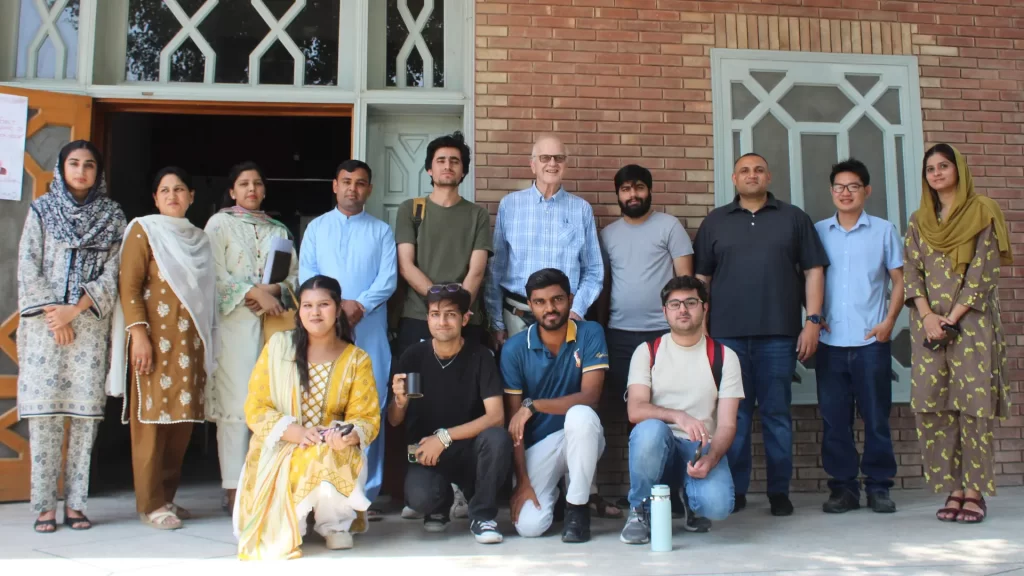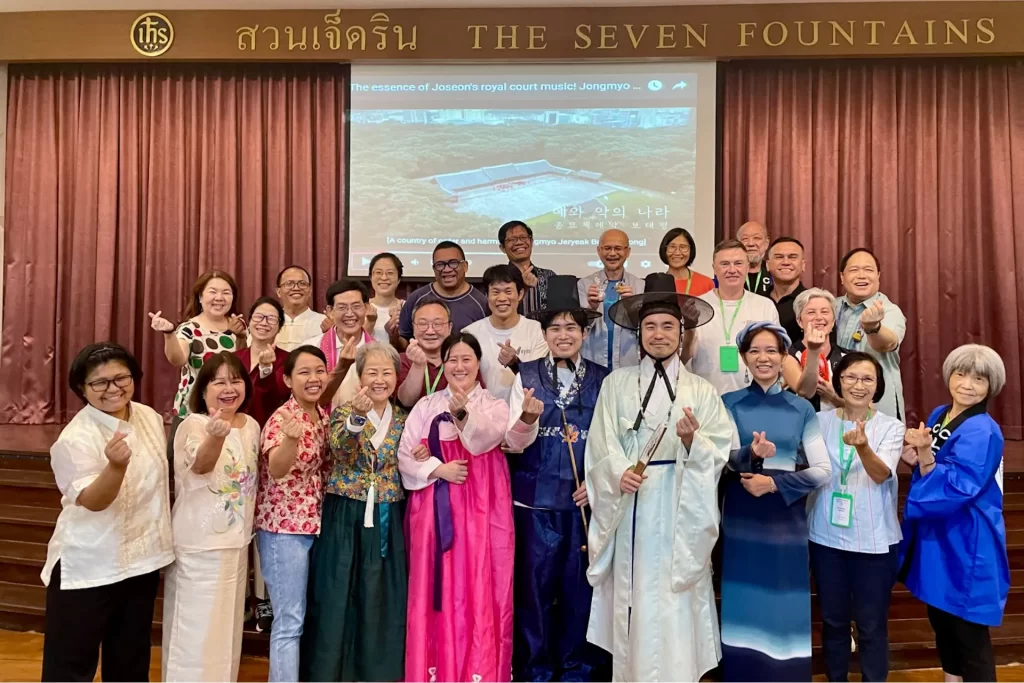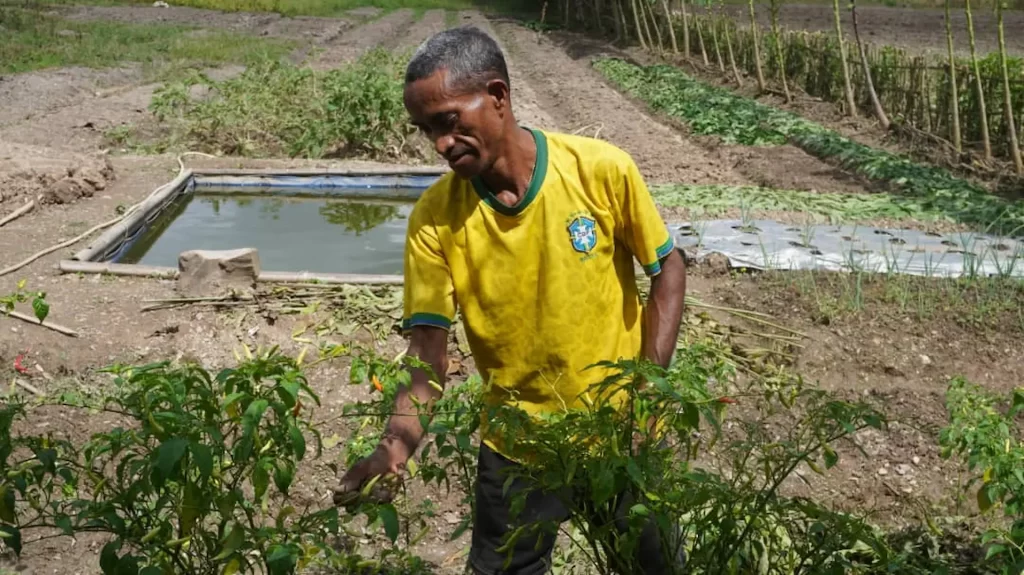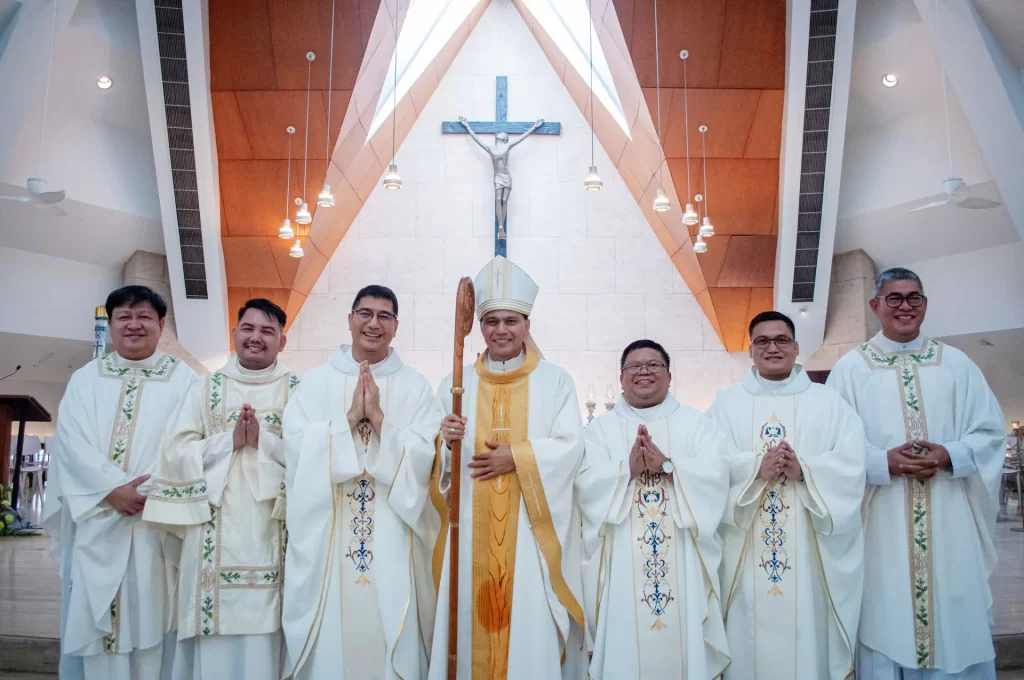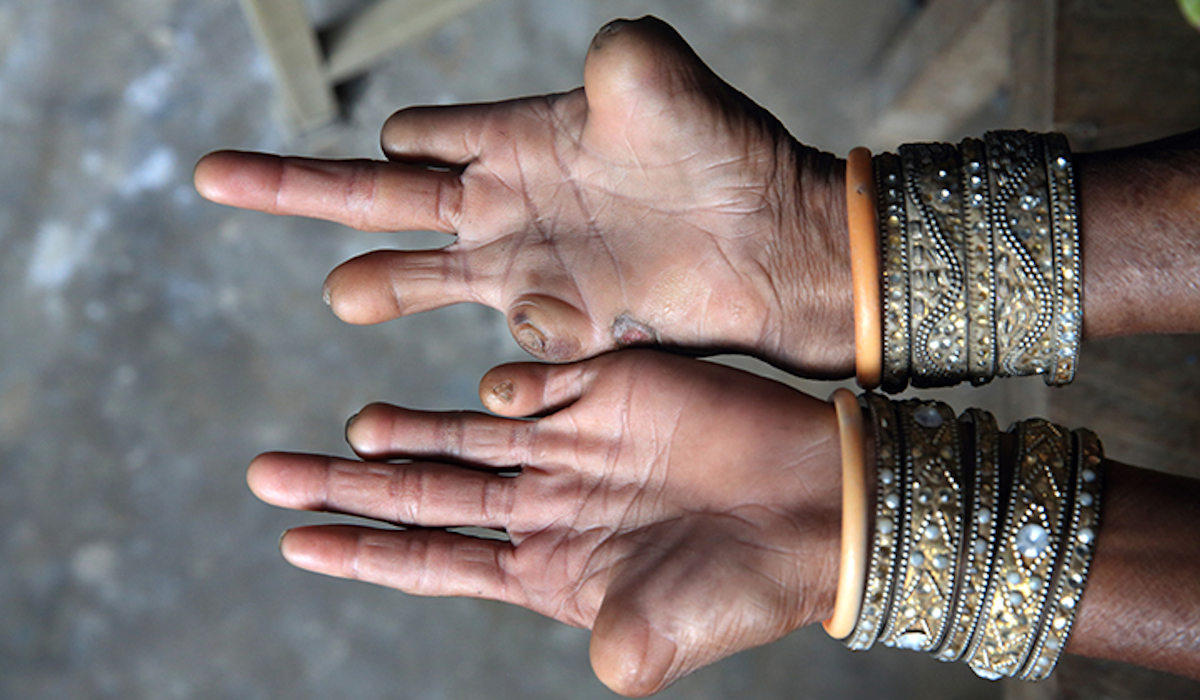
Photo from the American Leprosy Mission
I joined the Jesuits as a lay brother in 1960. I did my Novitiate and Juniorate at Vinayalaya, Mumbai, India. In those days we had the De Nobili College, which used to have over 250 Jesuits, from many countries and missioned to India, who were studying philosophy and theology before their ordination. There were other big Jesuit institutions in other Provinces in India as well. At that time the Superiors felt that I was destined to care for the sick and aged in one of the infirmaries of one of our Jesuit institutions.
In 1963, when I was still a Junior, I was given the opportunity to go to the city of Mangalore in Karnataka State, along with some brothers of other Provinces. We were assigned to gain nursing experience at the Fr Mueller Hospital there and prepare ourselves for this possible future assignment. What I can never forget is the visit of a Swiss doctor who had been asked to speak to us about leprosy. He was involved in work for those suffering from leprosy. He told us this one important thing: “Never ever use the word ‘leper’ but always say ‘leprosy patient’. You never describe a person with TB as a TBer or one suffering from Asthma as an Asthmaer! So why call these people ‘lepers’?”
The doctor was saddened to see how leprosy patients were being neglected in India. We normally believe the deformities we see in such patients to be caused by the disease, but “No,” said the doctor. “It is not the disease but the loss of sensation that is the main cause. Since they feel no pain they do not attend to any wound or other injuries in time. This leads to complications leading to their losing their fingers and toes and disfiguring of their noses and ears. All because they did not attend to even a minor injury to those parts of the body.” The doctor’s organisation taught the leprosy patients to carefully examine their whole body for wounds even if they were not feeling any pain. If they saw a wound or a cut, they had to immediately treat it.
In 1964, my Provincial decided that I should do my Diploma in Mechanical Engineering as he felt the Province needed to prepare someone to take charge of St Joseph’s Technical Institute in Pune. After my studies and some years of experience in the institute I was appointed principal in 1970.
The poor and the marginalised were given special preference for admission to our institute. We had entrance examinations for which the staff would be involved but the final decision was left to the principal. Those were the days when Pune was a fast growing industrial city and students who passed out of our institute could find immediate employment. Hence we usually distributed 1,000 application forms for the 75 places available.
Before and after my taking over as the principal of the institute, I used to go for a break with some long cycle rides. A number of times I passed by the village of Kondhwa, where there was a rehabilitation centre for cured leprosy patients. Here the patients were cared for and taught how to look after themselves. They were also involved in various activities like weaving and stitching clothes.
Sometime in 1972 or so, I happened to meet a Swiss volunteer at this rehabilitation centre. She had offered her services for about a year or so. I told her about the Swiss doctor whom I had met in Mangalore in 1963 and about what he had told us about leprosy patients. I told her where I was based and invited her to come and visit us sometime. A few weeks later she did come to our institute and after I had taken her around, she said: “I want you to do me a favour”. When I asked her what favour she expected of me, her response was: “Will you admit two young boys who are cured leprosy patients into your institute?”
My response was quick. “On two conditions,” I told her.
The first condition was that the two boys should have no external sign of leprosy and they had to be trained to look for injuries. Our institute was dealing in metal work and injuries were bound to happen to them. They had no external signs she said and were well trained to look after themselves. The second condition was that only two persons should know about these boys, which was she and I.
I finally admitted the two boys after the entrance exams. They completed their training without any problem and found employment easily. I never met them after that and I hope and pray all went well for them and their lives.
I want to thank the Swiss doctor and the Swiss volunteer for helping me to see leprosy patients in a totally different way.

